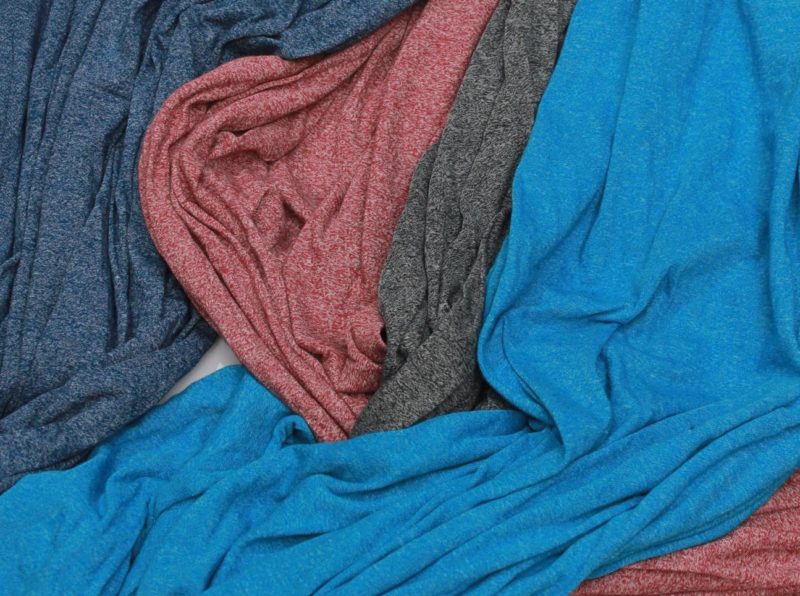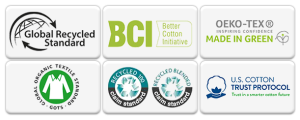

The technique of Jaspe Yarn is nothing more than making moorings or knots to certain proportions of threads where the different designs are formed and then, after being dyed, those moorings or knots are removed and the drawing remains as a negative. There is a great variety of designs.
Let us know more about Jaspe Yarn:
Jaspe Yarn Definition:
Anyone who travels in the world of yarn and fashion will repeatedly encounter such concepts and may wonder what is Jaspe Yarn?
Jaspe Yarn cotton is created when 2 yarns of cotton are dyed separately.
The starting point in making Jaspe Yarn is with two comb-dyed fibers. However, they are not uniformly mixed but are spun in parallel in equal parts. The result is a rustic-looking play of colors, in which both colors clearly remain recognizable as two individual tones. Thus, knitting pieces of Jaspe Yarns can be combined super.
Ecological Jaspe Yarn belongs to sustainable fashion fabrics.
First, fashion fabrics can be classified into three groups: natural, artificial and synthetic.
- Natural: If they come from vegetable or animal and have not undergone chemical transformation.
- Artificial: If they come from vegetable or animal and have undergone a chemical transformation.
- Synthetics: If they come from oil and have undergone a chemical transformation.
- Any tissue left out of this general classification is not sustainable. Not even natural calls.
Organic Jaspe or ecological Jaspe is beneficial for both our health and the environment. It is one of the yarns that are used when talking about sustainability in the world of fashion.
You can also find more details about this yarn on Jaspe Yarn Wikipedia.
Jaspe Yarn for each climate:
The wool that many of us associate with clothes in the past but this is not quite true 21st-century clothing manufacturers have taken early to mixing the wool blends that are popular now. That’s why now wool and fabrics are softer and not as grotesque as in the past but the tendency of strong and heavy fabrics returns and that’s why Jaspe Yarn is a yarn that does not disappear through time adapts to any climate and environment.
The wool is not just made of sheep but also of camel hair, goats and rabbits. The most well-known of the softest, lightweight wool is cashmere, a specialty wool product that comes from the Kashmir goat.
It is often thought of as heavy or thick fabric. Wool can be lightweight and now be used in a variety of ways. Thick wool still abounds for jackets, scarves and lined layers, are used in a variety of textures with a thick and warm fabric. But often light wool is showing a strong use in all kinds of clothes like the finally made sweaters and much thinner fabrics, the wonderfully adapted pants, and the accessories.
But the best test that wool has had is to adapt to the trends of knitting today “threads” now there are threads made with wool of a very high cost but of very high quality and resistance and they are excellent for decorating clothes with different textures.
The advantages of wool are many. The wool has a great memory and will return to its original shape when it has been folded or stretched. Wools treated, on the other hand, are processed so that they carry out a fold that is never going to be lost. The wool also has the capacity to absorb 30% of its weight when it is wet or with that amount of liquid absorbed, to the touch or against the skin does not feel wet.
This feature makes wool the fabric of choice for any time and climate when adapting and forming a garment. Good armor for the cold, and a perfect tool for its elasticity and thus avoiding that with the use the fabric is lost and the clothes are deformed.
Jaspe Yarn – A soft fabric:
Jaspe is probably the most sought after material by the educated consumer. This is, in fact, partly due to the cotton industry and its campaign putting cotton at the forefront of consumer thinking. The industry has been so successful in its campaign that cotton is now being used in everyday clothing, in a nutshell, the clothes for wear
Tuxedos, dress suits, and business attire, in general, have traditionally been constructed of wool. Cotton now has a bigger market, jackets, and pants as much as wool. In the US, cotton is the most sought and sold.
Cotton has been a part of history so much so that its origins are almost unknown. Native Americans from the south used cotton. Cotton was used by the Egyptians and cotton was eventually used all over the world and recognized as the fabric of choice for many countries. It has even replaced wool as the fabric of choice in many countries that traditionally chose wool.
Advantages and Disadvantages of Jaspe Yarn:
Jaspe has its disadvantages. It typically has no memory meaning that it does not hold its shape well. Cotton fabrics fade quickly which means they are not colorfast and show their wear sooner than wool clothing. Jaspe wrinkles easily and often need special care after it is washed. Ironing, pressing and steaming is usually necessary after the dryer. This is the reason why mixtures of cotton are seen. Jaspe blends will hold its value and shape much longer.
Jaspe Yarns:
This type of has advantages as well and far outweighs the disadvantages. This is evident by its popularity and use. The cotton is soft and comfortable against the skin. Its ability to absorb marks makes it ideal for many applications. It can be created in a wide variety of weights and textures.
Their advantages are dependent on the many types of processes available to alter their characteristics. It can be processed to be resistant hold color better or not to contract. Look for cotton in fashion clothing or the following areas of manufacture: bedding, upholstery, draperies, blankets, medical and surgical supplies, binding, and accessories such as shoes and bags. It is very common for the consumer.
Availability, pricing, and the global economy all play a role in the use of wool and cotton. The industry of the way is always open to new fashions, ideas. And there will always be something to choose or something that suits our needs.
Organic Jaspe Yarn: benefits for your health:
The organic jaspe must be certified so that its origin is not doubtful.
Also if they are animals as is their upbringing, as they are cared for and sacrificed. If it is local production, means of transport, etc. In addition, if they are artificial fibers will have to see their environmental impact, use of chemicals, etc.
There are textiles such as polyester that can never be sustainable because they are highly polluting.

